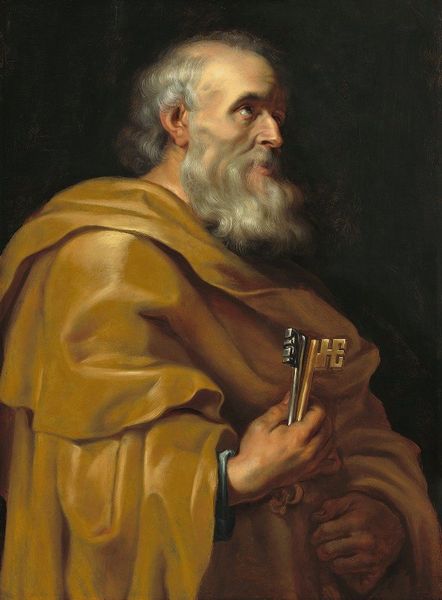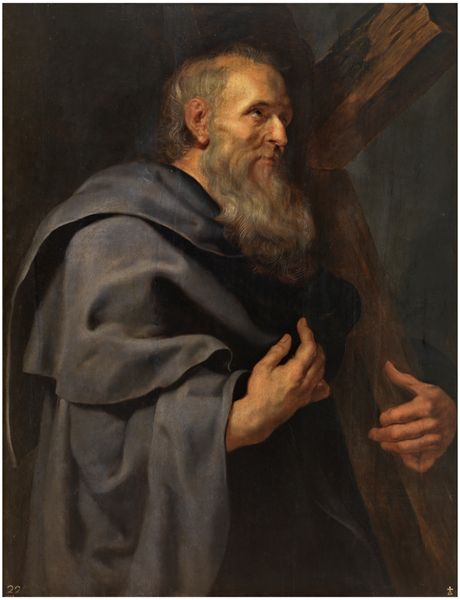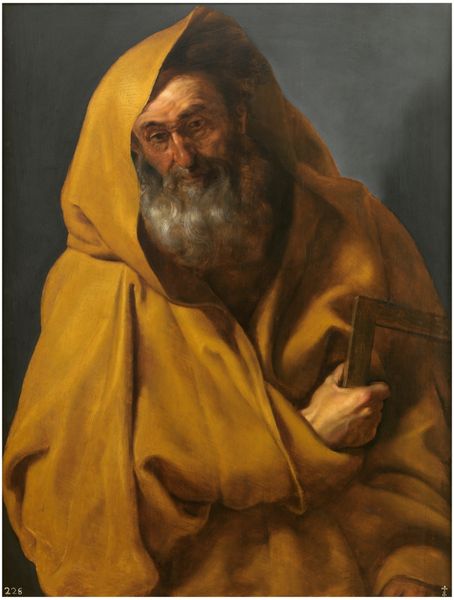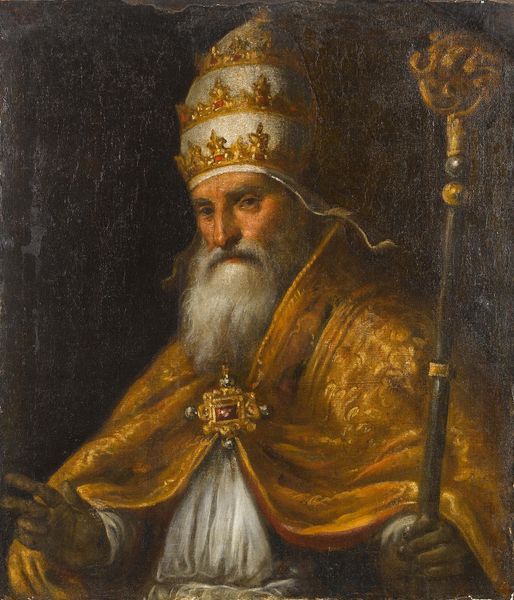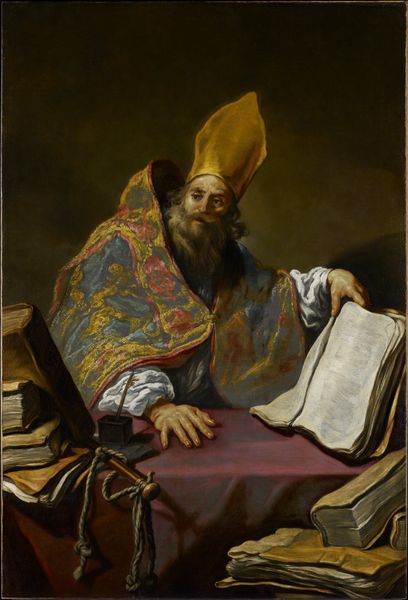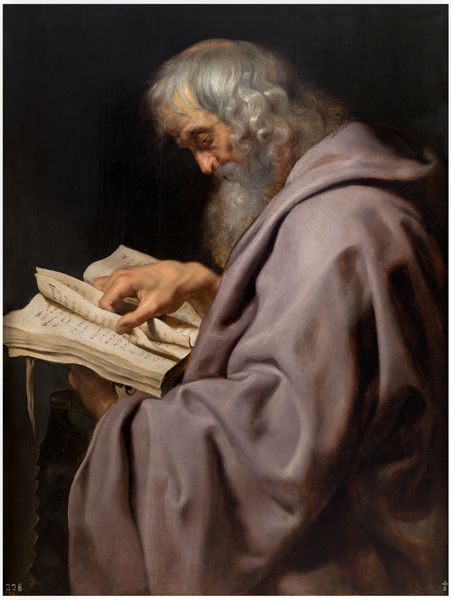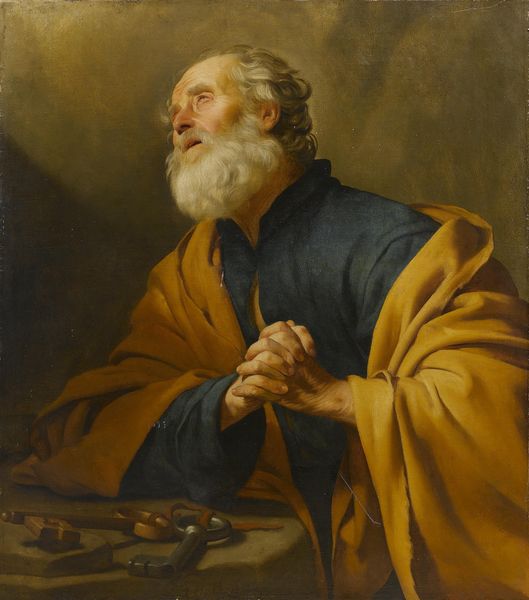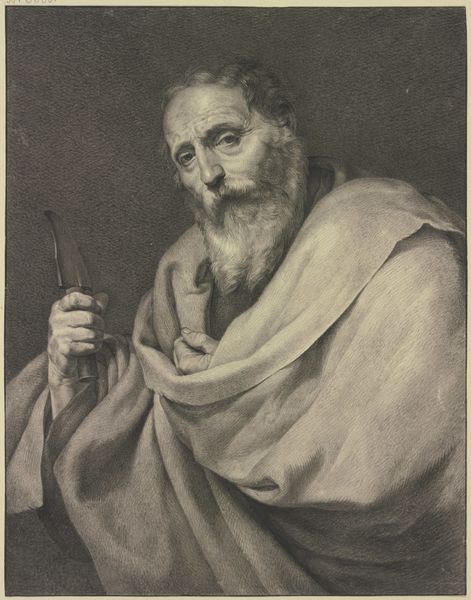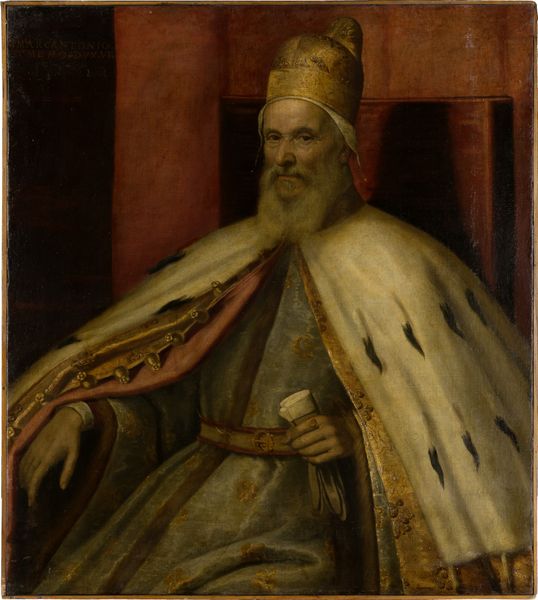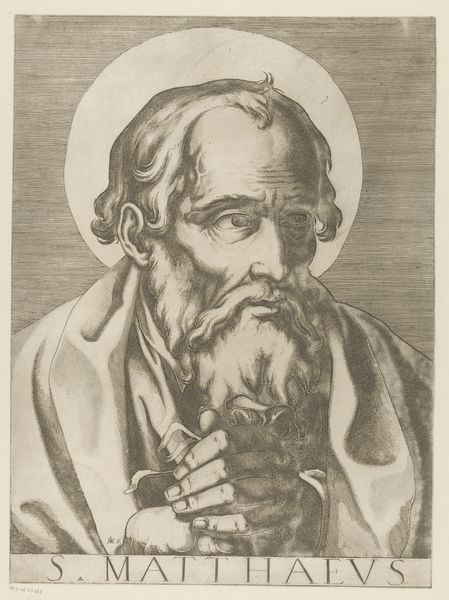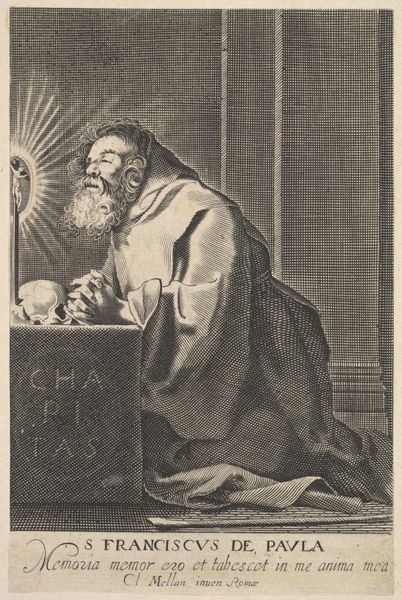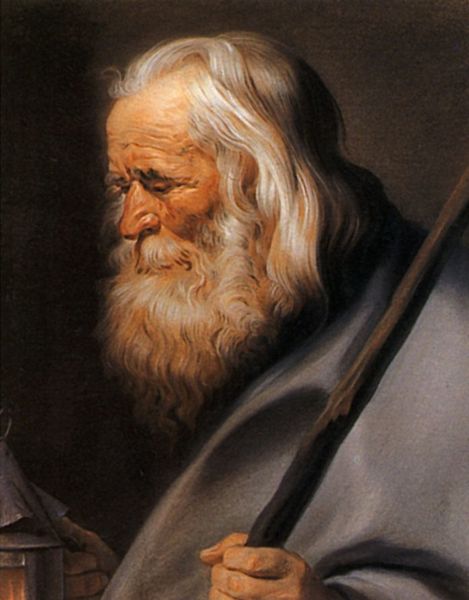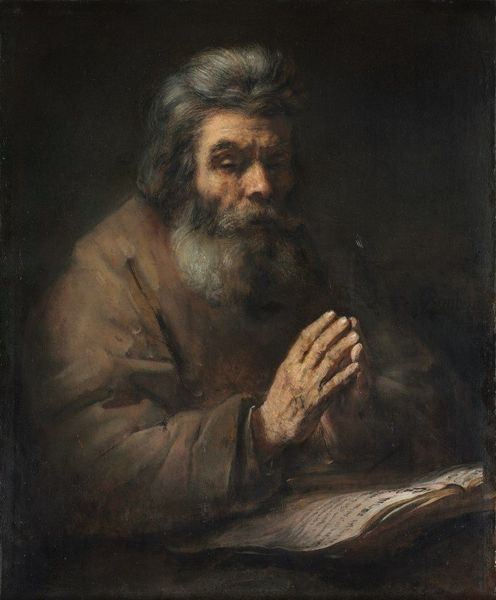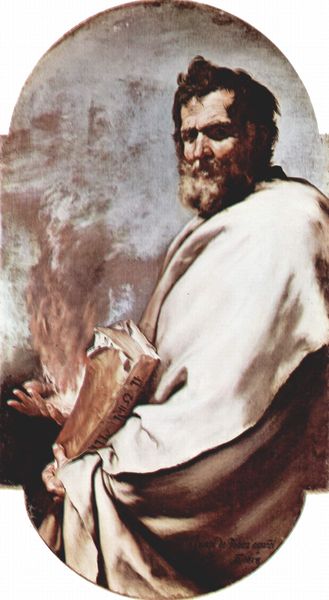
painting, oil-paint
#
portrait
#
baroque
#
painting
#
oil-paint
#
portrait subject
#
figuration
#
portrait reference
#
portrait head and shoulder
#
animal portrait
#
chiaroscuro
#
animal drawing portrait
#
portrait drawing
#
history-painting
#
facial portrait
#
portrait art
#
fine art portrait
#
celebrity portrait
Copyright: Public domain
Editor: Here we have Peter Paul Rubens' "Saint Peter" from 1612, an oil painting portraying the saint holding keys. There’s a somber, almost pleading, expression on Saint Peter's face that I find quite striking. How do you interpret this work, especially given its historical context? Curator: Rubens' "Saint Peter," beyond its artistic mastery, speaks volumes about the power dynamics within the Church and its relationship with the laity during the Counter-Reformation. The keys, symbols of papal authority, were contentious then. Peter's gaze, directed upward, could signify both faith and a yearning for divine guidance amid a time of great social and religious upheaval. Notice the stark chiaroscuro - how might that influence our reading of the saint’s role as a historical figure vs. his idealised projection? Editor: The dramatic lighting definitely adds to the sense of internal conflict. Do you think Rubens intended to portray a sense of vulnerability in a figure usually associated with unwavering strength? Curator: Absolutely! Consider how the Baroque era embraced emotion and realism. Rubens likely aimed to humanize Saint Peter, making him relatable to the masses who faced their own doubts and challenges. Furthermore, Rubens painted this during a period rife with political and religious conflicts. Highlighting Saint Peter’s supposed fallibility invites conversations around faith, leadership, and forgiveness, resonating powerfully within the broader social narratives. The keys could then represent not only power, but also the heavy burden and moral responsibility of leadership, an important point given that social responsibility often lay upon the shoulders of religious figures at the time. Editor: I hadn’t considered the element of relatability. Seeing it in that context shifts my understanding completely. Thank you! Curator: And for me, reflecting on your point about his gaze forces me to question if I gave undue consideration to the political context at the expense of his personal expression of piety!
Comments
No comments
Be the first to comment and join the conversation on the ultimate creative platform.
